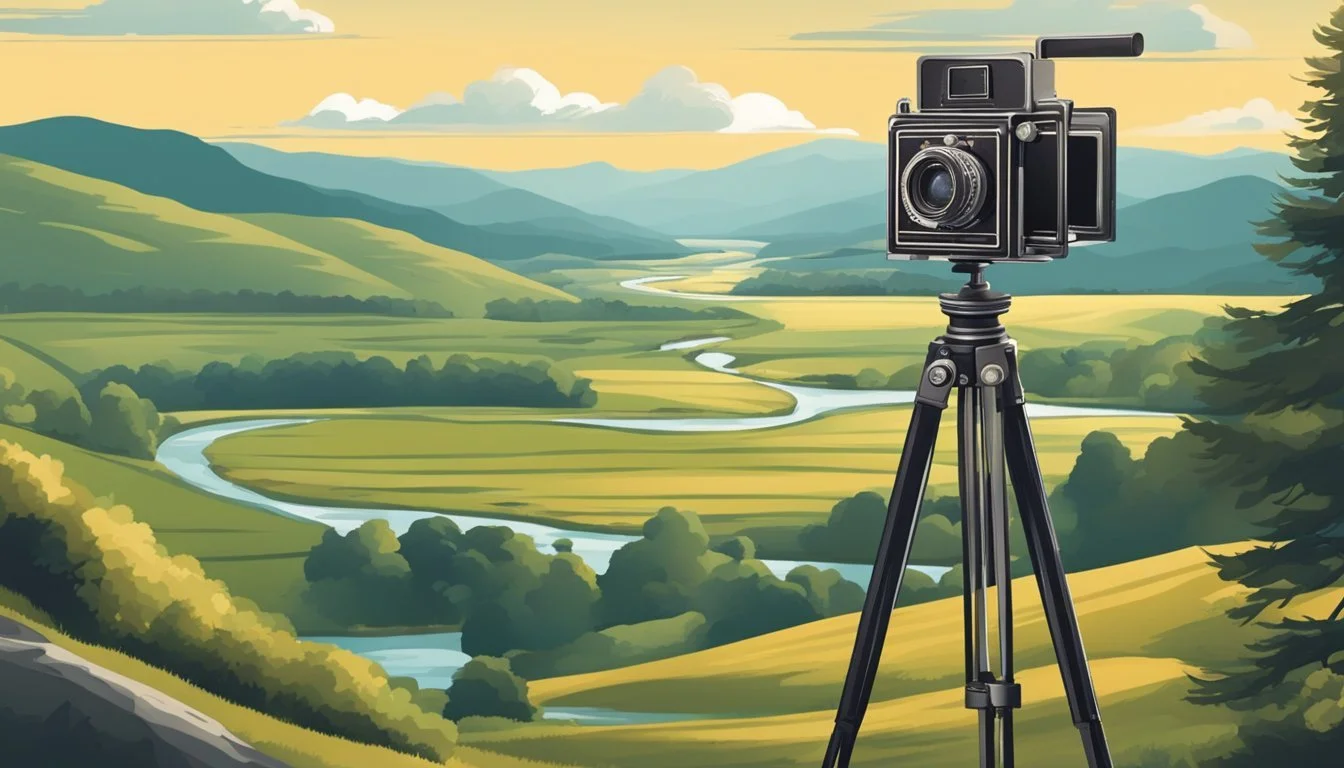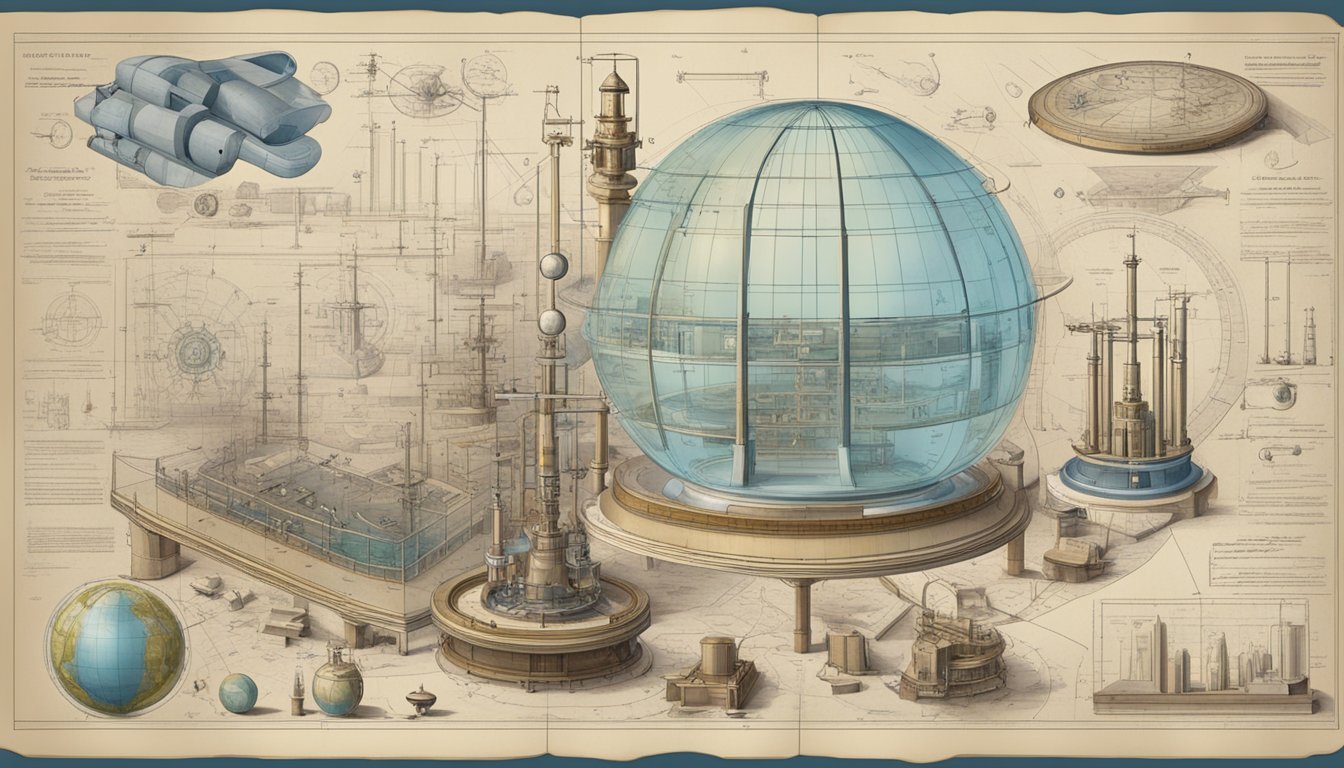Ken Burns: The Man Who Made America's Past Come Alive on Screen!
Ken Burns has become synonymous with American documentary filmmaking. His distinctive style and approach to storytelling have captivated audiences for decades. Burns has created over 30 documentary films and series, many of which explore pivotal moments and figures in U.S. history.
Burns' work often combines archival footage, photographs, interviews, and music to bring historical subjects to life. His documentaries cover a wide range of topics, from the Civil War and baseball to jazz and national parks. The filmmaker's commitment to thorough research and balanced perspectives has earned him critical acclaim and numerous awards.
Some of Burns' most notable works include "The Civil War," "Baseball," and "Jazz." These multi-part series delve deep into their subjects, offering viewers a comprehensive and engaging look at important aspects of American culture and history. Burns continues to produce thought-provoking documentaries that educate and inspire audiences around the world.
The Art of Documentary Filmmaking
Documentary filmmaking combines journalistic inquiry with artistic expression to create compelling non-fiction narratives. It requires meticulous research, creative storytelling techniques, and a keen eye for visual composition.
Defining the Genre
Documentaries aim to inform, educate, and illuminate real-world subjects through film. They explore historical events, social issues, and personal stories using a blend of interviews, archival footage, and original cinematography.
Unlike fictional films, documentaries present factual information, though the filmmaker's perspective often shapes the narrative. Subjects range from biographical portraits to investigative exposés on pressing global concerns.
Documentaries can take various forms, including:
Observational: Fly-on-the-wall approach
Participatory: Filmmaker interacts with subjects
Expository: Utilizes narration to guide viewers
Poetic: Emphasizes visual associations and mood
Ken Burns' Influence on Documentary Filmmaking
Ken Burns revolutionized the documentary genre with his distinctive style and approach to historical subjects. His work for PBS, particularly "The Civil War" series, set new standards for long-form documentaries.
Burns' signature techniques include:
Slow panning across still photographs
Use of period music and voice-over narration
In-depth research and expert interviews
Emotional storytelling that humanizes historical figures
His films often explore quintessentially American themes, diving deep into topics like jazz, baseball, and national parks. The Ken Burns Collection on PBS showcases his vast body of work, which has inspired countless filmmakers.
Visual Techniques and Narrative Style
Documentary filmmakers employ various visual and narrative techniques to engage viewers and convey information effectively. These methods help transform raw footage and facts into captivating stories.
Key visual techniques include:
Archival footage integration
Cinematography that captures authentic moments
Animation and graphics to illustrate complex concepts
Thoughtful editing to create narrative flow
Narrative strategies often involve:
Character-driven storytelling
Chronological or thematic structure
Voiceover narration or on-screen text
Juxtaposition of contrasting viewpoints
Successful documentaries balance artistic vision with journalistic integrity, presenting factual information in a visually compelling and emotionally resonant manner.
Ken Burns' Notable Works
Ken Burns has produced numerous acclaimed documentaries exploring pivotal moments and influential figures in American history. His films span topics from war and sports to music and art, offering in-depth examinations of culture and society.
The Civil War and American History
"The Civil War" (1990) remains one of Burns' most celebrated works. This nine-part series revolutionized historical documentaries with its innovative use of archival photographs and first-person accounts. The film delves into the conflict's causes, major battles, and lasting impact on American society.
Burns also tackled other significant periods in U.S. history. "The Roosevelts: An Intimate History" (2014) explored the lives of Theodore, Franklin, and Eleanor Roosevelt. "The Dust Bowl" (2012) examined the environmental catastrophe of the 1930s and its effects on American agriculture.
Sports in America: Baseball and Jackie Robinson
"Baseball" (1994) is Burns' expansive look at America's national pastime. The 18.5-hour series covers the sport's history from its origins to modern times. It explores baseball's role in American culture and its intersection with issues of race and social change.
"Jackie Robinson" (2016) focuses on the groundbreaking athlete who broke Major League Baseball's color barrier. The film examines Robinson's life, career, and lasting impact on civil rights in America.
Music as a Cultural Lens: Jazz and Country Music
"Jazz" (2001) is Burns' 10-part exploration of America's indigenous art form. The series traces jazz's evolution from its roots in New Orleans to its global influence. It features legendary musicians like Louis Armstrong, Duke Ellington, and Miles Davis.
"Country Music" (2019) delves into the history of this uniquely American genre. The eight-part series examines country music's origins, evolution, and cultural significance. It highlights iconic artists such as Hank Williams, Johnny Cash, and Dolly Parton.
Biographical Films: Leonardo da Vinci and Hemingway
Burns' "Leonardo da Vinci" (2023) explores the life and work of the Renaissance polymath. The film examines da Vinci's groundbreaking contributions to art, science, and engineering. It offers insights into his most famous works, including the Mona Lisa and The Last Supper.
"Hemingway" (2021) chronicles the life of the Nobel Prize-winning author Ernest Hemingway. The three-part series delves into Hemingway's writing, personal relationships, and enduring literary legacy.
Examining Conflict: The Vietnam War and The War
"The Vietnam War" (2017) is Burns' comprehensive look at the controversial conflict. The 18-hour series features interviews with veterans, anti-war protesters, and Vietnamese citizens. It examines the war's origins, key events, and lasting impact on American society.
"The War" (2007) focuses on World War II through the experiences of ordinary Americans. The seven-part series explores the conflict's impact on four American towns. It combines personal stories with broader historical context to create a compelling narrative of the war's effects on the home front.
Themes in Ken Burns' Documentaries
Ken Burns' documentaries explore pivotal moments and influential figures in American history. His films delve into complex topics that have shaped the nation's identity and cultural landscape.
American Identity and History
Burns examines the evolving American identity through his documentaries. He focuses on seminal events and movements that have defined the nation.
"The Civil War" series explores the conflict that nearly tore the country apart. It highlights the struggle over slavery and states' rights.
Burns also tackles cultural touchstones in "Baseball" and "Jazz." These films show how sports and music reflect broader societal changes.
His work on "The National Parks" celebrates America's natural wonders and conservation efforts. It links environmental protection to national pride.
War and Its Impact on Society
Burns' war documentaries go beyond battlefield tactics. They explore the human toll and societal shifts caused by conflict.
"The War" examines World War II's effect on American communities. It portrays the sacrifices of soldiers and civilians alike.
"The Vietnam War" tackles a more controversial conflict. The series presents multiple perspectives on a deeply divisive period.
"The U.S. and the Holocaust" reveals America's complex response to Nazi atrocities. It challenges viewers to confront difficult moral questions.
Exploring Notable American Figures
Burns brings historical figures to life through meticulous research and personal accounts. His biographical documentaries offer nuanced portraits.
"Benjamin Franklin" showcases the Founding Father's diverse talents and contradictions. It highlights Franklin's scientific curiosity and political acumen.
"Thomas Jefferson" explores the complex legacy of the third president. The film addresses Jefferson's ideals and his ownership of enslaved people.
"Jackie Robinson" tells the story of the baseball legend who broke the color barrier. It connects Robinson's struggles to the broader civil rights movement.
Production and Impact
Ken Burns' documentaries are renowned for their meticulous production process and far-reaching impact. His films blend historical footage, expert interviews, and compelling narratives to educate and engage audiences on a wide range of topics.
The Process of Documentary Creation
Burns' documentary creation involves extensive research and planning. His team spends years gathering materials, conducting interviews, and crafting narratives. For films like "American Buffalo," Burns and his collaborators traveled extensively to capture footage and meet with experts.
The production process often includes:
In-depth historical research
Collecting archival photographs and film
Conducting interviews with scholars and eyewitnesses
Writing and refining scripts
Careful editing to create a cohesive narrative
Gathering and Utilizing Data
Data plays a crucial role in Burns' documentaries. His team collects vast amounts of information from various sources:
Historical archives
Government records
Personal diaries and letters
Academic studies
Oral histories
This data is meticulously analyzed and woven into the narrative. In "American Buffalo," Burns used population statistics and historical accounts to illustrate the animal's decline and cultural significance.
Filmmakers as Educators
Burns and his team take on the role of educators through their documentaries. They present complex historical topics in accessible formats, fostering public understanding of American history and culture.
Key educational aspects include:
Presenting multiple perspectives on historical events
Contextualizing historical figures and their actions
Highlighting lesser-known aspects of familiar stories
Burns' films often become valuable teaching tools in schools and universities, supplementing traditional textbooks with engaging visual narratives.
Cultural and Educational Relevance
The impact of Burns' documentaries extends beyond entertainment. His films spark national conversations and renew interest in historical topics. "The Civil War" series, for example, led to increased visitation at battlefield sites and museums.
Burns' work has:
Influenced public perception of historical events
Inspired further research and scholarship
Preserved oral histories and personal accounts for future generations
His documentaries continue to shape cultural understanding and serve as important educational resources long after their initial release.
Digital Presence and Audience Engagement
Ken Burns has embraced digital platforms to expand the reach of his documentaries and connect with viewers. His work is accessible through various online channels, allowing for wider distribution and engagement.
Ken Burns on PBS and Online Platforms
PBS hosts Ken Burns's documentaries on its website and streaming services. Viewers can watch full episodes, clips, and behind-the-scenes content. The PBS app provides access to Burns's films on mobile devices and smart TVs.
Social media platforms like Facebook and Twitter feature official accounts for Ken Burns's projects. These accounts share updates, historical facts, and promotional material related to his documentaries.
Burns's production company, Florentine Films, maintains a website with information on past and upcoming projects. The site offers educational resources and links to purchase DVDs or stream content.
Audience Interaction with Documentary Content
Interactive elements accompany many of Burns's documentaries online. PBS provides discussion guides, lesson plans, and quizzes to engage viewers beyond passive watching.
Online forums and social media groups allow fans to discuss Burns's work. These platforms foster community engagement and deeper exploration of historical topics.
Live-tweeting events during documentary premieres encourage real-time audience participation. Viewers share thoughts, ask questions, and interact with experts featured in the films.
Utilizing Google Services and Privacy Settings for Content Distribution
Google's YouTube hosts official channels for Ken Burns and PBS, featuring trailers and clips from his documentaries. These channels utilize analytics to track viewer engagement and preferences.
Google Analytics helps monitor website traffic for Burns's projects, providing insights into audience demographics and viewing habits.
Privacy settings and cookie policies on PBS and other platforms allow users to control data collection. These settings balance personalized content delivery with user privacy concerns.
Personalized ads may appear alongside Burns's content online, tailored based on user preferences and viewing history. Users can adjust ad settings to manage their experience.
Exploring Science, Engineering, and Genius
Ken Burns' documentaries often highlight remarkable individuals who have made significant contributions to science and engineering. His films explore the genius behind groundbreaking innovations and architectural marvels.
Scientific Achievements and Innovations
Burns' documentaries shed light on pioneering scientific work. The Mayo Clinic, featured in one of his films, revolutionized medical practice through collaborative teamwork. The clinic's innovative approach to patient care and research has saved countless lives.
Burns also explores the scientific genius of figures like Leonardo da Vinci. Da Vinci's insatiable curiosity led him to study anatomy, botany, and physics. His detailed anatomical drawings were far ahead of their time, providing insights that would not be confirmed for centuries.
Architectural Marvels and Engineering Feats
Frank Lloyd Wright's architectural genius takes center stage in Burns' work. Wright's organic architecture philosophy produced iconic structures like Fallingwater and the Guggenheim Museum. His innovative designs seamlessly blend form and function, creating spaces that harmonize with their natural surroundings.
Burns also examines engineering marvels like the Brooklyn Bridge. This landmark structure showcased cutting-edge suspension bridge technology when it was built. The documentary highlights the ingenuity and perseverance required to overcome the technical challenges of its construction.
The Legacy of Ken Burns
Ken Burns has left an indelible mark on documentary filmmaking and American cultural understanding. His distinctive style and approach have shaped how history is presented through visual media.
Influence on Future Generations of Filmmakers
Burns pioneered techniques that became hallmarks of historical documentaries. His use of archival photographs, panning and zooming to create movement, became known as the "Ken Burns effect." This technique breathed life into static images, making history visually engaging.
Many filmmakers have adopted Burns' approach of weaving personal stories with broader historical narratives. His emphasis on using primary sources and expert interviews set a new standard for documentary research and presentation.
Burns' multi-part series format has inspired other filmmakers to tackle complex subjects in depth. His success demonstrated the public appetite for long-form historical content.
Contributions to Preserving American Culture
Burns' documentaries have significantly contributed to the preservation and understanding of American history. His works on the Civil War, Jazz, and Baseball have become cultural touchstones, educating millions about crucial aspects of American heritage.
By focusing on topics like the American Revolution and other pivotal moments, Burns has helped maintain public interest in foundational periods of U.S. history. His films often highlight lesser-known figures, ensuring their stories are not forgotten.
Burns' commitment to exploring diverse perspectives has broadened the narrative of American history. He consistently includes voices of women, minorities, and ordinary citizens alongside those of prominent historical figures.
His work has also inspired increased funding and support for historical preservation efforts, as public interest in the subjects of his documentaries often surges after their release.




